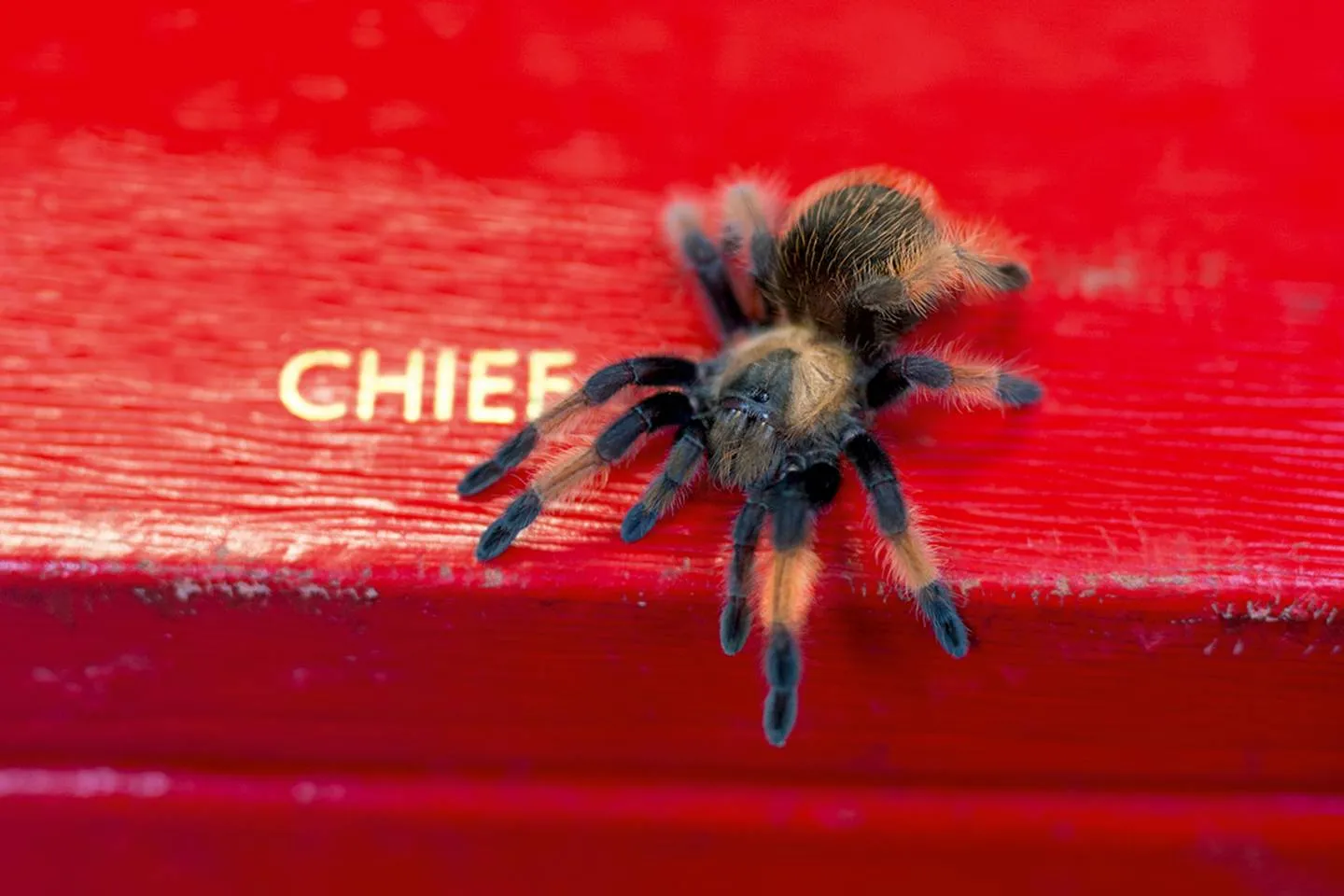Understanding Tarantulas
Tarantulas, with their impressive size and often striking appearance, have become increasingly popular pets. However, caring for a tarantula is a significant responsibility, requiring knowledge of their specific needs to ensure their health and well-being. These arachnids, belonging to the Theraphosidae family, come in a vast array of species, each with unique characteristics and care requirements. Before bringing a tarantula into your home, it’s crucial to understand their natural habitat, behavior, and the commitment involved in providing a suitable environment. Proper research and preparation are key to a successful experience as a tarantula owner. Failure to provide appropriate care can lead to stress, illness, or even premature death of your pet.
Choosing the Right Tarantula
Choosing the right tarantula is the first and perhaps most important step in responsible tarantula ownership. Different species have different temperaments, care needs, and growth rates. Some are more docile and easier to handle, making them ideal for beginners, while others are more defensive and require more experienced handling. Researching various species and understanding their specific requirements is essential before making a purchase.
Species to Consider

For beginners, species like the Chilean Rose Hair (Grammostola rosea) or the Pinktoe Tarantula (Avicularia avicularia) are often recommended due to their relatively docile nature and adaptability. These species are generally less prone to defensive behaviors and can tolerate a wider range of environmental conditions. Other beginner-friendly options include the Mexican Red Knee (Brachypelma hamorii), known for its striking coloration, and the Costa Rican Zebra (Aphonopelma seemanni). Each species has unique characteristics, so thorough research is always beneficial.
Things to Avoid
Certain tarantula species are best left to experienced keepers. Avoid highly defensive or venomous species if you are new to tarantula care. Avoid species known for their speed or unpredictable temperaments, as these can be challenging to handle and may pose a greater risk of bites or defensive displays. Additionally, be wary of purchasing tarantulas from unreliable sources, as these may not provide accurate information about the species or its care requirements. Always prioritize the health and well-being of the animal by selecting a reputable breeder or supplier.
Setting Up the Perfect Enclosure
Creating a suitable enclosure is crucial for your tarantula’s well-being, replicating its natural habitat to the best of your ability. This involves careful consideration of the enclosure size, substrate, temperature, and humidity. The right environment will minimize stress, encourage natural behaviors, and ensure your tarantula’s overall health. An inadequate enclosure can lead to a stressed or unhappy tarantula, affecting its appetite, behavior, and lifespan. Remember, the enclosure is the tarantula’s entire world.
Enclosure Size and Type

The size of the enclosure should correspond to the tarantula’s size and species. A juvenile tarantula requires a smaller enclosure than an adult. Too large an enclosure can make it difficult for the tarantula to find food, while too small an enclosure can restrict movement and cause stress. Glass terrariums or plastic enclosures are common choices, with adequate ventilation being a primary concern. The enclosure should have a secure lid to prevent escape and should be easy to clean and maintain. Ensure that the enclosure is escape-proof, as tarantulas are surprisingly adept at finding their way out.
Substrate Selection
The substrate, or bedding, is another crucial element of the enclosure. It provides a surface for the tarantula to walk on, burrow in, and provides humidity. Suitable substrates include coconut fiber, peat moss, and vermiculite. The substrate should be deep enough for burrowing species to create burrows, typically several inches deep. Avoid substrates that are toxic or can easily mold. The substrate should be kept slightly moist, especially for humidity-loving species. Regular spot cleaning is necessary to remove waste and uneaten food to prevent mold growth.
Temperature and Humidity
Maintaining the correct temperature and humidity levels is critical to your tarantula’s health. Most tarantulas thrive in temperatures ranging from 75°F to 85°F (24°C to 29°C). Use a heat source such as an under-tank heater or a low-wattage heat lamp to maintain the desired temperature, but avoid placing the heat source directly on the substrate. Humidity levels should vary depending on the species, but a general range is between 60-80%. Monitor both temperature and humidity using a reliable thermometer and hygrometer. Misting the enclosure with water can help maintain the required humidity levels, but avoid over-misting, as this can lead to mold growth.
Feeding Your Tarantula

Proper feeding is essential for your tarantula’s growth and health. Tarantulas are opportunistic predators and require a diet that provides them with the necessary nutrients to thrive. The type, size, and frequency of feedings will vary depending on the tarantula’s age, species, and overall health. Overfeeding can be as detrimental as underfeeding, so it’s important to understand your tarantula’s specific dietary needs.
What to Feed
The primary food source for tarantulas is insects. Crickets, mealworms, and roaches are common and readily available options. The size of the insects should correspond to the tarantula’s size; the insect should be no larger than the tarantula’s abdomen. Variety in the diet is also beneficial. You can occasionally offer other insects like waxworms or superworms as treats, but these should not be the primary food source due to their high-fat content. Always gut-load the insects with nutritious food before feeding them to your tarantula to ensure that your pet receives the maximum nutritional benefits.
Feeding Frequency
The feeding frequency depends on the tarantula’s age and metabolism. Spiderlings and juveniles typically need to be fed more frequently, perhaps two to three times a week, while adults can be fed once a week or even less. Observe your tarantula’s behavior; if it refuses food, it may be preparing to molt. Remove any uneaten food within 24 hours to prevent the growth of mold or mites. Adjust the feeding schedule based on the tarantula’s appetite and overall condition. A healthy tarantula will have a plump abdomen.
Watering Your Tarantula

Water is essential for a tarantula’s survival, and providing a clean water source is a critical aspect of tarantula care. Tarantulas need access to fresh water at all times to stay hydrated. The method of providing water will depend on the tarantula species and its environment. Dehydration can lead to serious health issues, so it’s vital to ensure your tarantula has access to clean water at all times.
Proper Hydration Techniques
There are various methods for providing water. A shallow water dish is a common and effective method, especially for terrestrial tarantulas. The dish should be shallow enough to prevent the tarantula from drowning. For arboreal species or those that prefer to drink from droplets, misting the enclosure with water is another effective technique. Make sure the water is clean and free of any chemicals or contaminants. Replace the water regularly and clean the water dish to prevent the growth of bacteria or algae. Ensure the water source is always accessible.
Water Bowl vs. Spraying
Choosing between a water bowl and spraying depends on the species and the humidity requirements. A water bowl is generally suitable for terrestrial tarantulas and those that prefer to drink from a stationary source. Misting is a better choice for arboreal species and those that prefer to drink water droplets off of surfaces. Both methods can be used in conjunction to ensure proper hydration. Observe your tarantula’s behavior to determine the preferred method. It’s important to maintain the correct humidity levels to facilitate the molting process and overall health.
Handling Your Tarantula

Handling a tarantula can be a rewarding experience, but it must be approached with caution and respect for the animal. Not all tarantula species are suited for handling, and some may be more prone to defensive behaviors, such as biting or flicking urticating hairs. Always prioritize the tarantula’s well-being and safety, and never force a tarantula to be handled. Understanding your tarantula’s temperament and behavior is critical before attempting to handle it.
Do Tarantulas Bite?
Yes, tarantulas can bite. While their venom is generally not considered life-threatening to humans, a bite can be painful and cause localized symptoms such as swelling, redness, and itching. The severity of the bite depends on the species, the amount of venom injected, and the individual’s sensitivity. Avoid handling tarantulas unless you are very experienced and comfortable with the species’ temperament. Many tarantulas are also capable of flicking urticating hairs, which can cause skin irritation and should be avoided.
Handling Precautions
If you choose to handle a tarantula, do so with extreme care. Always wash your hands thoroughly before and after handling. Handle the tarantula gently and slowly, and avoid any sudden movements. Always handle the tarantula over a soft surface, such as a bed or a carpet, to prevent injury if it falls. Be aware of the tarantula’s body language, and if it shows signs of stress or agitation, such as raising its front legs or flicking hairs, immediately return it to its enclosure. Avoid handling during molting, as tarantulas are very vulnerable during this time.
Health and Wellness

Maintaining a healthy tarantula involves providing a suitable environment, a proper diet, and regular observation. Tarantulas are generally hardy creatures, but they are susceptible to certain health issues. Recognizing the signs of illness and taking prompt action can help prevent serious health problems and ensure your tarantula lives a long and healthy life. Regular observation of your tarantula’s behavior, eating habits, and overall appearance is key.
Identifying Illness
Several signs can indicate that a tarantula is unwell. Loss of appetite, lethargy, and unusual behavior are common indicators. Other signs include a swollen abdomen, difficulty molting, or the presence of parasites. Watch for changes in your tarantula’s behavior. Check for any discharge from the mouth or other body parts. Look for discoloration on the abdomen. If you suspect your tarantula is sick, it is best to consult with a veterinarian experienced in exotic animals. Early detection and treatment are crucial for recovery.
Common Health Issues
Some of the common health issues in tarantulas include mites, fungal infections, and parasites. Mites can infest the enclosure and cause irritation to the tarantula. Fungal infections can occur due to excessive humidity or poor ventilation. Parasites can also affect tarantulas and can be transmitted through contaminated food or substrate. Proper hygiene, including regular cleaning of the enclosure and proper disposal of waste, can help prevent many health issues. Quarantine any new tarantula before introducing it to your existing collection.
Molting Process
Molting is a natural process for tarantulas, where they shed their exoskeleton to grow. This process can be stressful for the tarantula, and it’s important to provide a safe and supportive environment during this time. Understanding the molting process will help you identify when your tarantula is preparing to molt and ensure that you don’t disturb or endanger it.
What is Molting?
Molting is the process by which a tarantula sheds its old exoskeleton to allow for growth. Tarantulas don’t have internal skeletons; instead, they have an exoskeleton that encases their bodies. As the tarantula grows, this exoskeleton becomes too small, and the tarantula must shed it to reveal a new, larger one. The molting process can take several hours or even days, depending on the tarantula’s age and species. During this period, the tarantula is very vulnerable and should not be disturbed.
Helping Your Tarantula
During molting, it is important to maintain the correct humidity levels and to avoid disturbing the tarantula. Do not feed your tarantula during this time, and ensure that it has access to fresh water. Provide a quiet and undisturbed environment. If the tarantula has trouble molting, you can increase the humidity slightly to help soften the exoskeleton. Never try to pull the old exoskeleton off. Once the molting is complete, the tarantula will be very soft and vulnerable, so avoid handling it for a few days until its new exoskeleton hardens.
Conclusion
Caring for a tarantula is a rewarding experience that demands a commitment to providing the best possible environment. From understanding the species-specific needs to providing proper enclosure setups, feeding routines, and health monitoring, responsible ownership is crucial. By following these amazing tips, you can create a thriving habitat and ensure your tarantula leads a long, healthy, and fulfilling life. Remember that research and patience are key to a successful tarantula-keeping journey. Enjoy the unique experience of caring for these fascinating creatures and appreciate their beauty and complexity. Your dedication will undoubtedly be rewarded with a happy, healthy tarantula for years to come.
